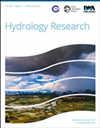Linking explainable artificial intelligence and soil moisture dynamics in a machine learning streamflow model
IF 2.4
4区 环境科学与生态学
Q2 Environmental Science
引用次数: 0
Abstract
Machine learning algorithms are increasingly applied in hydrological studies with promising results. However, these algorithms generally lack the ability for easy interpretability of the results by users. In this study, we compare six different explainable artificial intelligence (XAI) algorithms that help understand the effect of input data on the simulation results. The methods are explored on two distinct approaches for streamflow modeling using the long short-term memory (LSTM) model: a single model approach using only meteorological forcing data and a regional approach including also static catchment attributes. To gain further insight into the internal dynamics of the LSTM models, the relationship between cell states and soil moisture is investigated. A strong correlation suggests that the LSTM models inherently capture the concept of soil moisture as a catchment-scale storage mechanism. The XAI methods are applied to derive a timestep of influence, revealing how many days of input data are relevant for the model output. All XAI methods result in similar seasonal patterns in the timestep of influence, suggesting that the methods are comparable. Setting soil moisture dynamics in context to seasonal development of the timestep of influence suggests resetting LSTM as soon as soil moisture saturation occurs.在机器学习溪流模型中将可解释人工智能与土壤水分动态联系起来
机器学习算法越来越多地应用于水文研究,并取得了可喜的成果。然而,这些算法普遍缺乏便于用户解释结果的能力。在本研究中,我们比较了六种不同的可解释人工智能(XAI)算法,这些算法有助于理解输入数据对模拟结果的影响。我们利用长短期记忆(LSTM)模型对两种不同的流场建模方法进行了探讨:一种是仅使用气象强迫数据的单一模型方法,另一种是还包括静态流域属性的区域方法。为了进一步了解 LSTM 模型的内部动态,研究了单元状态与土壤湿度之间的关系。强烈的相关性表明,LSTM 模型从本质上捕捉到了土壤水分作为集水尺度存储机制的概念。XAI 方法用于推导影响时间步,揭示输入数据中与模型输出相关的天数。所有 XAI 方法都能在影响时间步中得出相似的季节模式,这表明这些方法具有可比性。将土壤水分动态与影响时间步的季节性发展联系起来,建议在土壤水分饱和后立即重置 LSTM。
本文章由计算机程序翻译,如有差异,请以英文原文为准。
求助全文
约1分钟内获得全文
求助全文
来源期刊

Hydrology Research
Environmental Science-Water Science and Technology
CiteScore
5.30
自引率
7.40%
发文量
70
审稿时长
17 weeks
期刊介绍:
Hydrology Research provides international coverage on all aspects of hydrology in its widest sense, and welcomes the submission of papers from across the subject. While emphasis is placed on studies of the hydrological cycle, the Journal also covers the physics and chemistry of water. Hydrology Research is intended to be a link between basic hydrological research and the practical application of scientific results within the broad field of water management.
 求助内容:
求助内容: 应助结果提醒方式:
应助结果提醒方式:


